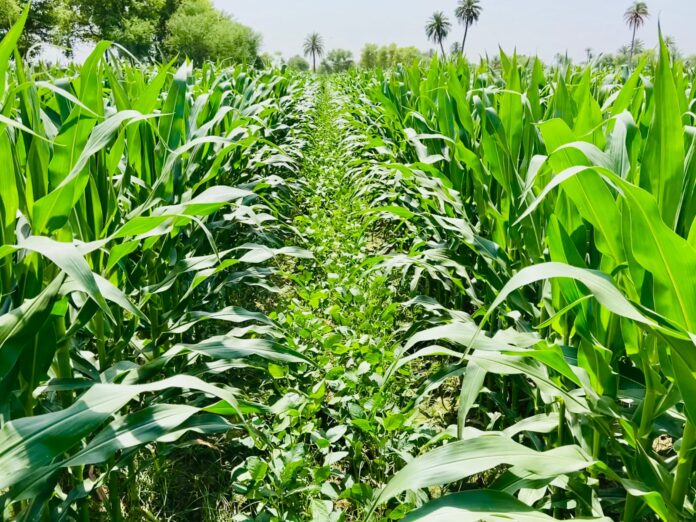As Pakistan has been confronted with severe economic challenges especially after massive countryside floods, with the shrinking foreign exchange reserves, the country’s various imports are putting additional financial strain.
Statistics from the State Bank of Pakistan (SBP) show that in FY2021, Pakistan’s imports of soya beans, whether or not broken, reached about $1.145 billion, a strong growth of about 50% year-on-year, exhibiting the country’s urgent demand for soybeans. However, in the first quarter of FY2023, Pakistan’s soybean imports were $269 million, down about 18% year-on-year, which may had been affected by the decline of the country’s foreign exchange reserves.
Soybean production should be adequately considered by Pakistan because of the country’s over dependence on imports of soybeans.
Lack of high-quality seeds, high-yielding planting patterns and machinery restricting Pak soybean production
“We are dependent on imports. It is very expensive which causes increase in the price of feed, oil etc. day by day. It is our need to plant it in our country,” Hafiz Saad Bin Mustafa, Oilseed Scientist, Ayub Agricultural Research Institute said.
According to him, In Pakistan, all crops are non-GMO except cotton. “Most foreign varieties that we import are of mild areas and GMO. They can neither be planted here nor can they survive here. So seeds of local varieties should be multiplied and should be promoted in the potential areas that we have identified by our trials and adoptability studies,” Hafiz said. As he sees it, since soybean is mostly cultivated in such countries as America, Brazil and Argentina where there is mild climate, Pakistan needs to develop its own non-GMO soybean verities that can perform well in high temperatures.
“We do not produce good quality seeds, and the total seed production is twenty percent in different crops. There is a huge gap. At present we are dependent on imported seeds for different crops even for wheat, rice, cotton and vegetables, and the same is with soybeans. We should produce it locally,” Dr. Zahir Ahmad, In-charge, Soybean Breading Lab, University of Agriculture Faisalabad (UAF) said.
According to Dr. Zahir Ahmad, farmer needs specific planters, harvesters and threshers. “Mechanization is one of the best approaches by which we can increase soybean production. In this way we need less labor, less time and less storage time,” he said.
China helping Pakistan find a way out of predicament
Talking about the latest progress of soybean production in Pakistan, Dr. Zahir Ahmad emphasized that now their focus is intercropping-specific soybean promotion, which is a high-yielding technology from China.
“Dr. Muhammad Ali Raza from the Islamia University of Bahawalpur who was recently graduated from Sichuan Agricultural University, China has expertise in intercropping especially soybean intercropping with different crops, and he has efficiently introduced this technology in different areas of Pakistan. We have been collaborating with China at different stages and in different technologies,” Dr. Zahir Ahmad said.
Maize-soybean strip intercropping plots in Bahawalpur, Pakistan.
Hafiz Saad Bin Mustafa is also working on promoting maize-soybean intercropping technology brought by Dr. Ali and has achieved promising results. “Many people thought soybean can’t be cultivated in Pakistan but I didn’t think that way. Dr. Ali supported my point. People were not shifting to soybean because they thought it’s a competition with maize. However, with intercropping, people can grow maize and soybean at the same place. Then we identified intercropping specific lines or varieties. We provide those lines to Dr. Ali for evaluation since the last two years. The yield advantage is double or 2.5 times higher than the conventional varieties,” he said.
In Hafiz’s opinion, soybean intercropping technology fits Pakistan’s conditions well and is hopefully to be applied in more areas. “Traditional rice areas or cotton areas lie uncultivated for a specific time period as no crop fits it at that time period. We roughly made a calculation and estimated that if we use 60% of that kind of land, we can make profit of at least $3 billion annually. This is from the area that is uncultivated, free and on which farmers are unable to earn anything. We have grown soybean in those areas. Secondly, Soybean is a leguminous plant. It fixes atmospheric nitrogen as it contains nitrogen fixing root nodules. By this the fertility level of free soil will also increase and farmers will need less nitrogen for the next crop. So, you are making economic gains and getting soybean crops plus soil fertility is also improved. So we are doing this,” Hafiz analyzed.
“As we know, Pakistan’s oilseed import bill is increasing. We are importing in billions of dollars. If we locally produce soybean, we can cope with the challenge of importing oilseeds. In addition, China is the largest importer of soybean from USA. If we produce soybean locally in our country, we can have the chance to export soybean to China instead of importing it,” Muqadas Saleem, Scientist Soybean Breeding, University of Agriculture, Faisalabad said.


